What is Mead? Mead, often referred to as “honey wine,” is an ancient alcoholic beverage created through the fermentation of honey and water. With a rich history dating back thousands of years, mead holds a significant place in various cultures and traditions worldwide.
Definition of Mead: Mead is an alcoholic drink made by fermenting honey with water, sometimes combined with fruits, spices, or other flavorings. It is one of the oldest alcoholic beverages known to humankind, predating both wine and beer.
Historical Significance: Mead has been a part of human history for millennia, with evidence of its production dating back to ancient civilizations such as Greece, Rome, and Egypt. It played a vital role in various ceremonies, celebrations, and rituals, and was often associated with royalty and nobility.
Different Types of Mead:
- Traditional Mead: Made solely from honey, water, and yeast, this is the purest form of mead.
- Melomel: A variation of mead that incorporates fruits or fruit juices, such as blackberries, raspberries, or cherries. Blackberry mead, the focus of this recipe, falls under this category.
- Cyser: A mead made by blending honey with apple juice or cider.
- Pyment: A mead made by blending honey with grape juice or wine.
- Metheglin: A mead infused with herbs or spices, such as cinnamon, ginger, or cloves.
With its rich history and diverse flavors, mead has experienced a resurgence in popularity among modern homebrewers and craft beverage enthusiasts, making it an exciting and rewarding beverage to explore and create.
Why Make Blackberry Mead?
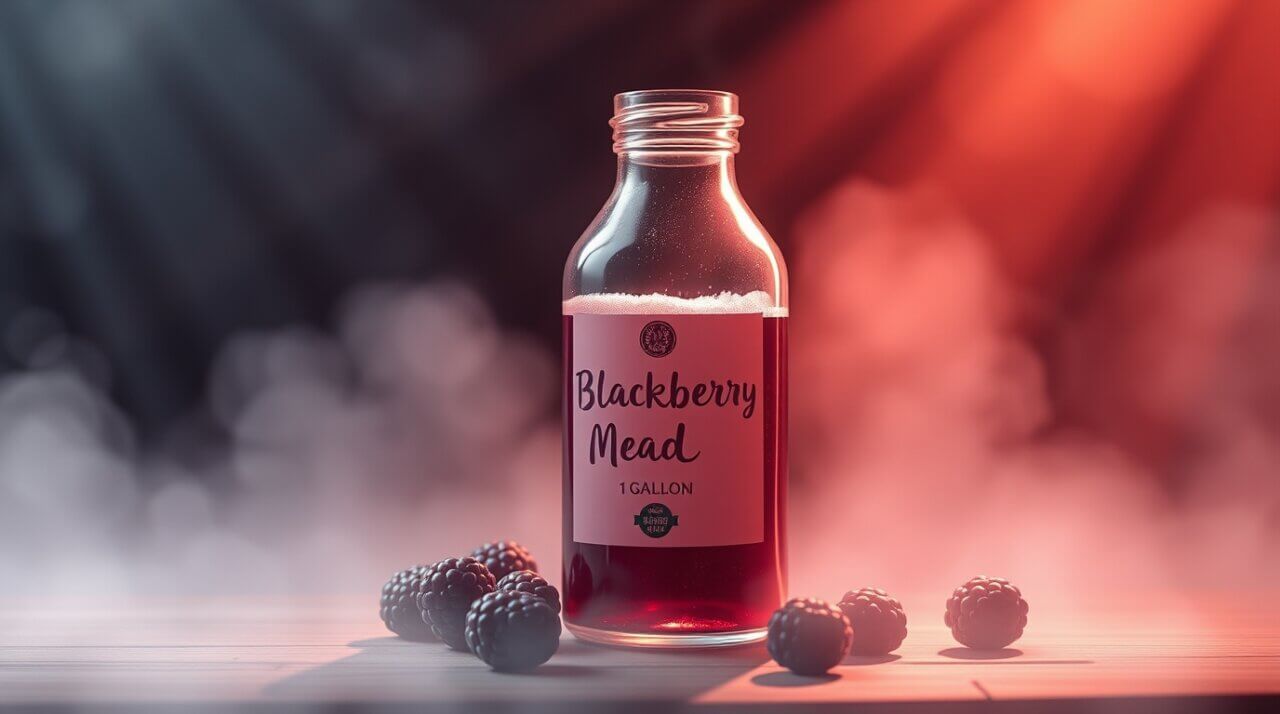
Blackberry mead offers a unique and captivating flavor profile that sets it apart from traditional meads. The tartness of the blackberries perfectly complements the rich sweetness of the honey, creating a harmonious balance that dances on the palate. This delightful combination results in a refreshing and fruity mead that is sure to delight your senses.
Beyond its enticing taste, blackberry mead boasts several health benefits. Blackberries are a powerhouse of antioxidants, vitamins, and fiber, making them a nutritious addition to your homebrewing endeavors. Honey, the star ingredient in mead, is renowned for its antimicrobial properties and contains a wealth of beneficial compounds, including enzymes and minerals.
Moreover, blackberry mead has been gaining popularity among homebrewers and mead enthusiasts alike. Its alluring color, ranging from deep purple to ruby red, adds a visually stunning element to any gathering. As the craft beer and homebrewing scenes continue to thrive, the demand for unique and flavorful beverages like blackberry mead has skyrocketed, making it an exciting addition to any homebrewer’s repertoire.
Ingredients for 1 Gallon Blackberry Mead
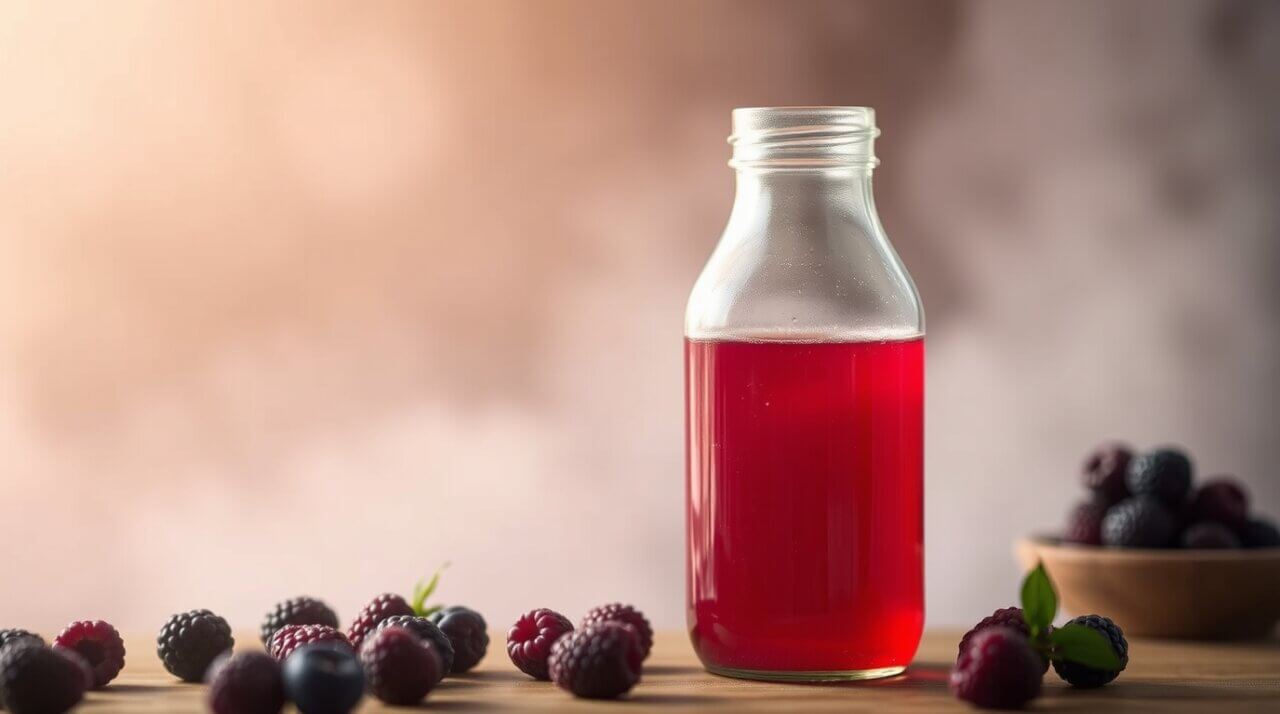
To craft a delectable 1-gallon batch of blackberry mead, you’ll need the following ingredients:
- Honey: 3 lbs of high-quality, unpasteurized honey. Look for varietals like orange blossom or wildflower, which provide a balanced sweetness and flavor profile.
- Blackberries: 2 lbs of fresh or frozen blackberries. For optimal flavor, opt for plump, ripe berries in peak season.
- Water: 1 gallon of clean, unchlorinated water. Spring water or filtered tap water works best.
- Yeast: 1 packet of wine or mead yeast, such as Lalvin 71B-1122 or Red Star Premier Cuvée. These strains are well-suited for fruit meads and can handle higher alcohol levels.
- Yeast Nutrient: 1 tsp of yeast nutrient, like Fermaid K or Diamond Yeast Nutrient. This provides essential vitamins and minerals for healthy fermentation.
When sourcing ingredients, prioritize quality over cost. Fresh, locally sourced honey and berries can elevate the flavor profile of your mead. Consider visiting a local apiary or farmer’s market for the best ingredients.
For yeast and nutrients, purchase from reputable homebrew suppliers to ensure viability and quality. Proper storage and handling of these ingredients are crucial for a successful fermentation.
With these essential ingredients in hand, you’re ready to embark on the exciting journey of crafting your own blackberry mead masterpiece.
Equipment Needed

To make a 1-gallon batch of blackberry mead, you’ll need the following equipment:
- Fermentation Bucket: A food-grade plastic bucket with a capacity of at least 1 gallon, ideally with a lid and an opening for an airlock.
- Airlock: A device that allows carbon dioxide to escape while preventing air from entering the fermentation vessel. This is crucial for maintaining an anaerobic environment during fermentation.
- Siphon/Racking Cane: A rigid tube or cane used for transferring the mead from one vessel to another, leaving behind any sediment.
- Bottles and Caps/Corks: You’ll need clean, sanitized bottles to package your finished mead. Choose bottles designed for carbonated beverages if you plan to bottle-condition your mead for carbonation. Caps or corks are necessary for sealing the bottles.
- No-Rinse Sanitizer: A food-grade sanitizing solution, such as Star San or One Step, is essential for ensuring a clean and bacteria-free environment throughout the brewing process.
- Hydrometer: This tool measures the specific gravity of the must (unfermented mead) and the final gravity of the fermented mead, allowing you to calculate the alcohol content.
- Funnel: A large funnel can be helpful when transferring the mead from one vessel to another, minimizing spills and messes.
- Stirring Spoon: A long-handled, food-grade plastic spoon is useful for stirring the must and incorporating ingredients.
- Thermometer: A liquid or digital thermometer is necessary for monitoring the temperature during fermentation, as yeast performs best within a specific temperature range.
- Straining Bag or Cheesecloth: These can be used to separate the fruit from the mead during the transfer or bottling process, ensuring a clear final product.
While not strictly necessary, some additional tools like a wine thief, degasser, and a hydrometer can make the process more convenient and precise. Proper sanitization of all equipment is crucial to prevent contamination and ensure a successful fermentation.
Step 1: Sanitize – The Key to Successful Mead Making
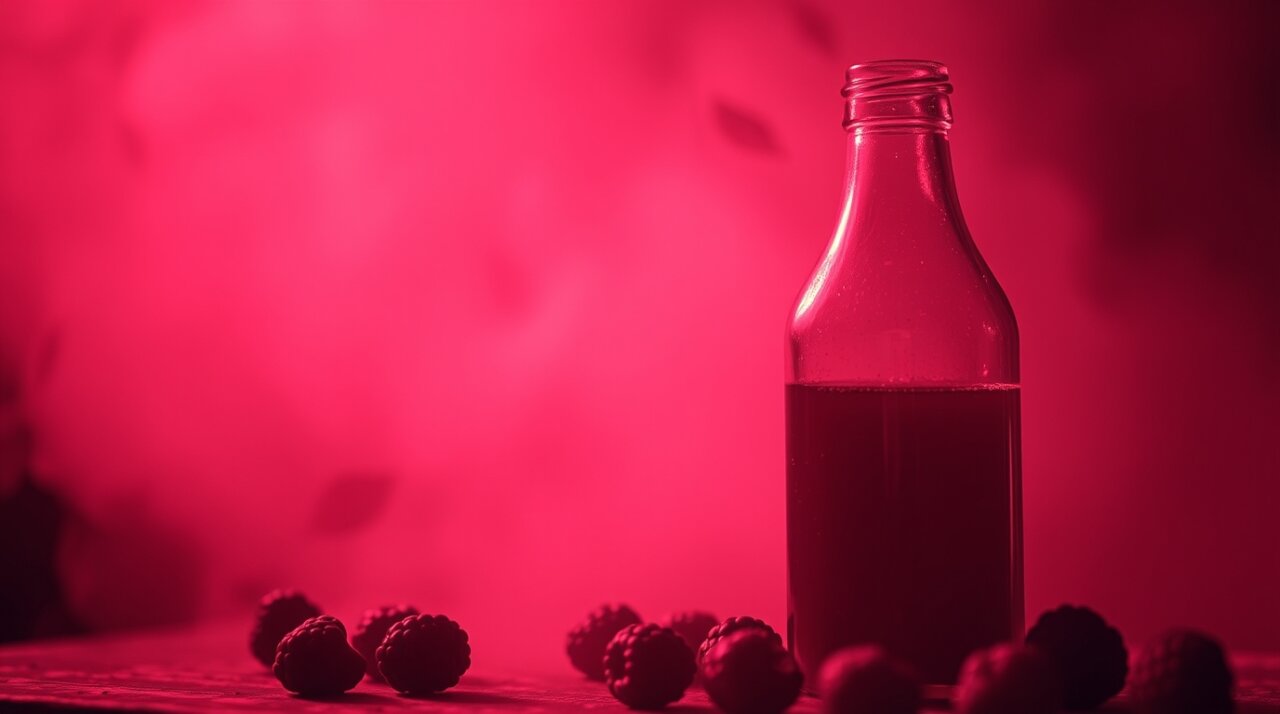
Proper sanitization is crucial in mead making, as it prevents the growth of unwanted bacteria and wild yeasts that can ruin your batch. Failure to sanitize your equipment thoroughly can lead to off-flavors, stuck fermentations, and even spoilage of your mead.
To ensure a clean and contaminant-free environment, follow these steps:
- Gather Your Sanitizing Solution: Use a food-grade sanitizer specifically designed for homebrewing, such as Star San or Potassium Metabisulfite. Follow the manufacturer’s instructions carefully for proper dilution and contact time.
- Clean and Rinse Equipment: Before sanitizing, thoroughly clean all equipment with a brewery wash or unscented soap and hot water. Scrub away any visible residue or debris, and rinse everything thoroughly.
- Sanitize All Surfaces: Submerge or spray all equipment that will come into contact with your mead, including fermentation buckets, airlocks, siphon tubing, bottling wand, and bottles. Ensure that every surface is completely covered with the sanitizing solution.
- Allow for Proper Contact Time: Let the sanitizer work its magic by leaving the equipment submerged or coated for the recommended contact time, usually around 2-5 minutes.
- Avoid Rinsing After Sanitizing: Most modern sanitizers are no-rinse solutions, so there’s no need to rinse after sanitizing. Any residual sanitizer will be diluted and consumed by the yeast during fermentation.
- Work Quickly and Efficiently: Once sanitized, try to minimize the exposure of your equipment to potential contaminants. Work in a clean, well-ventilated area, and avoid touching the interior surfaces of your sanitized equipment with bare hands.
Proper sanitization may seem like a tedious step, but it’s an essential part of the mead-making process. By following these guidelines, you’ll create a clean and controlled environment for your yeast to thrive, ensuring a successful fermentation and a delicious, high-quality blackberry mead.
Step 2: Prepare the Must
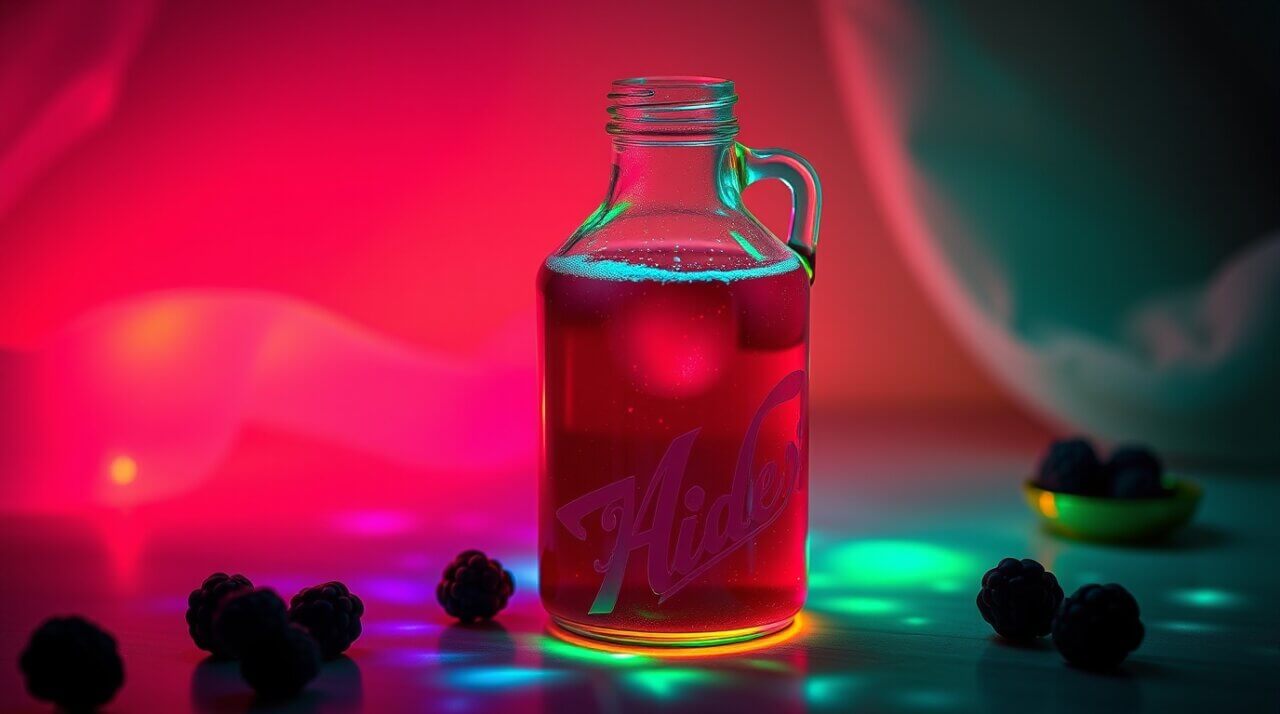
Preparing the must, or the unfermented honey-water mixture, is a crucial step in the mead-making process. It sets the foundation for your blackberry mead’s flavor and ensures a successful fermentation.
Mixing Honey and Water
Begin by measuring out the required amount of honey, typically around 3 pounds for a 1-gallon batch. Opt for a high-quality, unpasteurized honey for the best flavor and aroma. Gently warm the honey to make it more fluid and easier to incorporate into the water.
Next, add the appropriate amount of water to your sanitized fermenter. For a 1-gallon batch, you’ll need approximately 0.6 gallons of water. It’s essential to use clean, chlorine-free water to avoid any off-flavors. Consider using spring water or treating your tap water with a campden tablet to remove any chlorine.
Slowly stir the warmed honey into the water, ensuring it dissolves completely. Avoid vigorous stirring, as this can introduce unwanted oxygen into the must.
Handling Blackberries
Fresh, ripe blackberries are the star of this mead. Carefully rinse the blackberries and gently mash them, releasing their juices and flavors. You can use a potato masher, a fork, or even your clean hands to crush the berries.
Once mashed, add the blackberry pulp and juice to the honey-water mixture. Stir gently to incorporate the blackberry essence throughout the must.
Adding Nutrients and Energizers
Yeast requires specific nutrients to thrive and complete the fermentation process successfully. Consider adding a nutrient blend or energizer to the must, following the manufacturer’s instructions.
These additions provide essential vitamins, minerals, and nitrogen compounds that support yeast health and help prevent stuck fermentations or off-flavors.
With the must prepared, you’re ready to move on to the next step: pitching the yeast and kickstarting the fermentation process.
Step 3: Pitching the Yeast
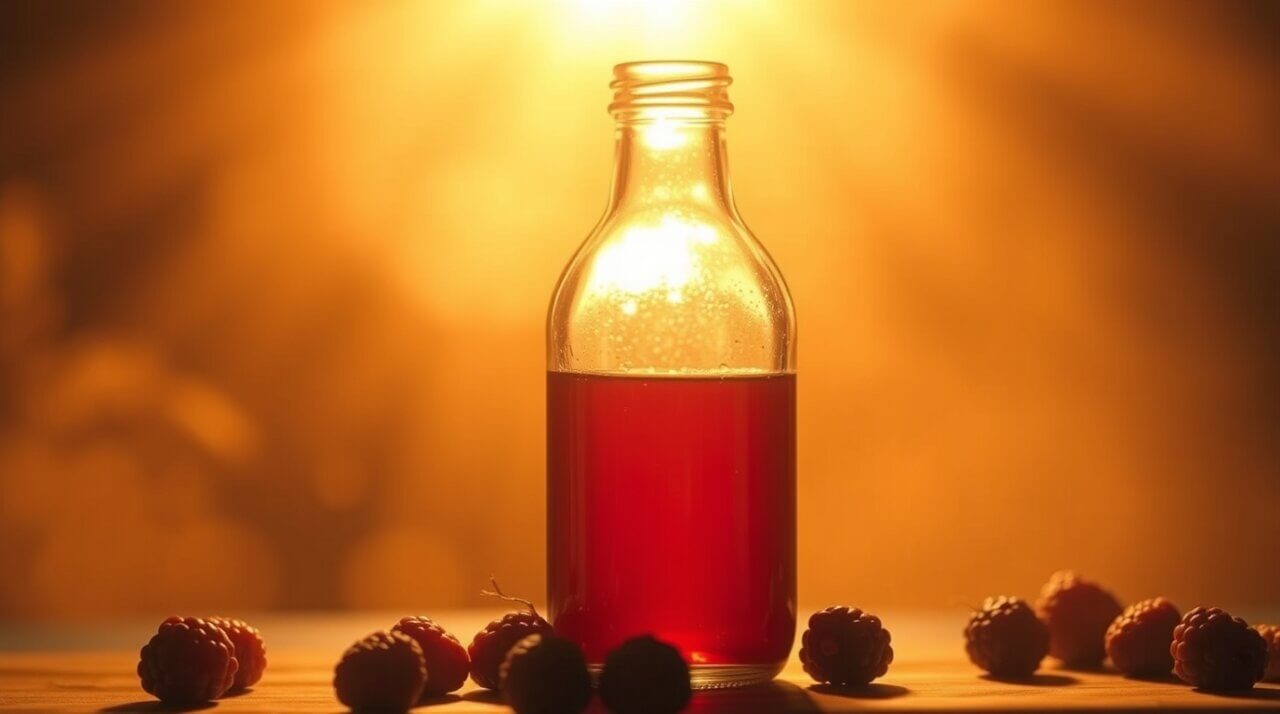
Proper yeast handling is crucial for a successful fermentation. Before pitching the yeast, it’s essential to rehydrate it according to the manufacturer’s instructions. Rehydrating the yeast helps it wake up and become active, leading to a more vigorous fermentation.
When it comes to yeast strains for mead, there are several options to consider. One popular choice is champagne yeast, which can tolerate higher alcohol levels and contribute to a dry, crisp flavor profile. Alternatively, you can opt for wine yeasts, which may impart fruity or floral notes to complement the blackberry character.
Once the yeast is rehydrated, gently sprinkle it over the must’s surface and give it a gentle stir to incorporate it evenly. Avoid vigorous stirring, as this can introduce unwanted oxygen and potentially stress the yeast.
Fermentation temperature plays a vital role in the overall flavor and aroma of your mead. Generally, fermenting between 65°F and 70°F (18°C to 21°C) is recommended for most yeast strains. Cooler temperatures may result in a slower fermentation, while warmer temperatures can lead to off-flavors or a “hot” alcohol taste.
It’s essential to maintain a consistent temperature throughout the fermentation process. Consider using a fermentation chamber or insulating your fermentation vessel to minimize temperature fluctuations.
Primary Fermentation
After pitching the yeast into the must, it’s time to begin the primary fermentation stage. This initial phase is crucial for converting the sugars from the honey into alcohol. Here’s what you need to know:
Setting Up Primary Fermentation
- Transfer the must into a sanitized primary fermenter, leaving enough headspace for foam and krausen formation.
- Fit the fermenter with an airlock or blow-off tube to allow carbon dioxide (CO₂) to escape while preventing air and contaminants from entering.
- Place the fermenter in a cool, dark area with a consistent temperature between 65°F and 75°F (18°C to 24°C).
Monitoring Fermentation Activity
During the first few days, you’ll notice increased activity as the yeast multiplies and begins consuming the sugars. Here’s what to look for:
- Foaming and krausen (thick, rocky head) formation within the first 24-48 hours.
- Vigorous bubbling in the airlock or blow-off tube, indicating active fermentation.
- A slight rise in temperature, as fermentation generates heat.
After the initial burst of activity, fermentation will slow down but continue for several weeks. Monitor the airlock or blow-off tube for signs of ongoing fermentation.
Racking to Secondary
Once the vigorous fermentation subsides, typically after 7-10 days, it’s time to rack (transfer) the mead to a sanitized secondary fermenter. This process separates the mead from the spent yeast and other sediments, allowing for further clarification and aging.
- Sanitize the secondary fermenter and a racking cane or auto-siphon.
- Carefully rack the mead from the primary fermenter, leaving behind the sediment at the bottom.
- Top up the secondary fermenter with a sanitized stopper and airlock.
The mead will continue fermenting at a slower rate in the secondary fermenter until all the fermentable sugars are consumed, and the yeast falls dormant.
Secondary Fermentation
After the primary fermentation has completed and the mead has reached the desired starting gravity, it’s time to rack (transfer) your blackberry mead into a clean, sanitized carboy for secondary fermentation. This crucial step serves several purposes:
- Separating the Mead from the Lees: During primary fermentation, a thick sediment called lees accumulates at the bottom of the fermenter. Racking the mead off the lees helps to prevent off-flavors and ensures a clearer final product.
- Allowing for Clarification: Secondary fermentation provides an extended period for the mead to clarify naturally. Suspended particles and yeast will gradually settle out, resulting in a brilliantly clear mead.
- Stabilizing and Sweetening: If you prefer a sweeter mead, you can add potassium sorbate and potassium metabisulfite to stabilize the mead and prevent refermentation when backsweetening with additional honey or other sweeteners.
- Aging and Flavor Development: The secondary fermentation stage allows the mead to age and develop more complex flavors. During this time, the harsh flavors from fermentation will mellow, and the blackberry notes will integrate more harmoniously.
To rack your mead for secondary fermentation, carefully siphon the mead from the primary fermenter into a clean, sanitized carboy, leaving the thick lees behind. Attach an airlock, and let the mead continue fermenting at a consistent temperature (around 65-70°F) for several weeks or months, depending on your desired level of clarification and flavor development. Monitor the airlock activity, and once it has completely stopped, your mead is ready for bottling or additional aging.
Bottling and Aging
Bottling your blackberry mead is an exciting step, as it marks the end of the fermentation process and the beginning of the aging journey. Proper bottling techniques are crucial to ensure your mead is preserved correctly and develops its full flavor potential during aging.
When to Bottle
The ideal time to bottle your mead is when the fermentation has completed, and the mead has cleared. This typically occurs after the secondary fermentation, which can take several weeks or even months, depending on the conditions. You’ll know it’s ready when the mead has stopped releasing carbon dioxide, and the sediment has settled at the bottom of the carboy.
Proper Bottling Steps
- Sanitize: As with every step in the mead-making process, sanitization is key. Thoroughly clean and sanitize your bottles, siphon tubing, and any other equipment that will come into contact with the mead.
- Siphon: Carefully siphon the clear mead from the carboy, leaving behind the sediment at the bottom. Avoid splashing or agitating the mead, as this can introduce unwanted oxygen and sediment.
- Bottle: Using a bottle filler or carefully pouring, transfer the mead into your sanitized bottles, leaving about an inch of headspace at the top of each bottle.
- Cork or Cap: For aging purposes, it’s recommended to use high-quality corks or caps that create an airtight seal. This will prevent oxidation and preserve the mead’s flavor during aging.
Estimating Alcohol by Volume (ABV)
Before bottling, you may want to estimate the final alcohol content of your mead. This can be done using a hydrometer to measure the specific gravity of the mead. The difference between the original gravity (before fermentation) and the final gravity (after fermentation) can be used to calculate the approximate ABV using an online calculator or a formula.
Aging Recommendations
Aging is an essential step in developing the complex flavors and aromas of your blackberry mead. While it’s possible to enjoy your mead shortly after bottling, allowing it to age for several months to a year (or even longer) can significantly enhance its character.
Store your bottled mead in a cool, dark place with consistent temperatures, ideally between 55°F and 65°F (13°C to 18°C). Avoid exposure to direct sunlight or heat, as this can cause off-flavors and accelerate aging beyond the desired level.
During aging, the mead will undergo various chemical reactions that contribute to its flavor development. The blackberry notes may become more pronounced, and the mead may develop a smoother, more well-rounded taste. Additionally, the mead may clear further, resulting in a brilliant, crystal-clear appearance.
While patience is required, periodic sampling can help you determine when your blackberry mead has reached its peak flavor. Enjoy the journey and savor the reward of your hard work and dedication!
Troubleshooting Common Issues
Mead-making, like any fermentation process, can sometimes encounter challenges. Here are some common issues you may face when crafting your blackberry mead and how to address them:
Stuck Fermentation
A stuck fermentation occurs when the yeast becomes inactive before fully fermenting the must. This can happen due to various reasons, such as extreme temperatures, lack of nutrients, or high alcohol levels. If you notice that fermentation has slowed or stopped prematurely, try the following:
- Gently rouse the mead by giving it a swirl to reintroduce oxygen.
- Add yeast nutrients or energizers to provide the yeast with the necessary compounds to continue fermentation.
- Make a yeast starter with fresh, active yeast and pitch it into the stuck mead.
Off-Flavors
Off-flavors can develop in mead due to bacterial infections, oxidation, or byproducts of yeast metabolism. Common off-flavors include vinegar-like sourness, rotten egg smell (hydrogen sulfide), or plastic-like notes. To prevent or address off-flavors:
- Maintain proper sanitization throughout the brewing process.
- Avoid excessive aeration or splashing during racking and bottling.
- Consider adding potassium metabisulfite or campden tablets to discourage bacterial growth.
- Age the mead longer, as some off-flavors may dissipate over time.
Oxidation
Oxidation can cause your mead to develop stale, cardboard-like flavors and aromas. It occurs when oxygen interacts with the mead, leading to chemical reactions that degrade the flavor. To minimize oxidation:
- Ensure that all equipment and bottles are properly purged of oxygen before use.
- Minimize headspace in fermentation vessels and bottles.
- Consider adding potassium metabisulfite or campden tablets to scavenge oxygen.
- Age the mead in an anaerobic (oxygen-free) environment.
Clarity Issues
A cloudy or hazy appearance in your mead can be caused by residual yeast, proteins, or other particulates. While not necessarily a flaw, some prefer a crystal-clear mead. To improve clarity:
- Allow the mead to age and settle for an extended period.
- Use clarifying agents like bentonite, sparkolloid, or chitosan to help precipitate particles.
- Consider cold crashing (chilling the mead to near-freezing temperatures) to encourage particulates to drop out.
- Filter the mead using a fine mesh or specialized filters designed for homebrewing.
Remember, patience and attention to detail are key in mead-making. If you encounter any issues, don’t hesitate to seek advice from experienced meadmakers or consult additional resources for guidance.
Flavor Variations
While the combination of honey and blackberries creates a delightful and well-balanced mead, you can experiment with various ingredients to create unique flavor profiles. Here are some suggestions for adding additional fruits, spices, and honey varieties to your blackberry mead:
Other Fruit Additions:
- Raspberries: Pair beautifully with blackberries, adding a tart and vibrant note.
- Cherries: Lend a rich, deep flavor that complements the blackberry notes.
- Strawberries: Contribute a refreshing sweetness and hint of tanginess.
- Peaches: Introduce a subtle floral aroma and velvety texture.
Spice Blends:
- Cinnamon and Clove: A classic combination that adds warmth and complexity.
- Vanilla Bean: Imparts a smooth, creamy note that enhances the overall richness.
- Orange Zest: Provides a bright, citrusy aroma and flavor.
- Star Anise: Lends a licorice-like aroma and unique depth.
Honey Varieties:
- Wildflower Honey: A versatile choice that contributes subtle floral notes.
- Buckwheat Honey: Offers a robust, molasses-like flavor that pairs well with blackberries.
- Orange Blossom Honey: Adds a delicate citrus aroma and sweetness.
- Avocado Honey: Contributes a rich, buttery taste and velvety texture.
Remember, when experimenting with additional ingredients, start with small amounts and gradually increase until you achieve your desired flavor profile. It’s also essential to consider how the added components may interact with the fermentation process and adjust your techniques accordingly.
Tips for Best Results
Temperature control is crucial throughout the mead-making process. During fermentation, maintain a consistent temperature between 65°F and 75°F (18°C to 24°C) for optimal yeast performance. Use a brew belt, fermentation chamber, or other temperature control methods to achieve this range. Fluctuations in temperature can lead to off-flavors or a stalled fermentation.
Patience is key when it comes to aging your blackberry mead. While it may be tempting to bottle and drink your creation immediately, allowing your mead to age for at least 6 months, and preferably 12 months or longer, will yield a smoother, more complex flavor profile. The aging process allows the flavors to meld and mature, resulting in a well-rounded, harmonious taste.
Don’t be afraid to experiment with blending. Combining your blackberry mead with other fruit meads or even traditional meads can create unique and delightful flavor combinations. Try blending a portion of your batch with a raspberry or cherry mead for a burst of additional fruit notes, or blend it with a traditional mead to add depth and complexity.
Finally, consider entering your blackberry mead in homebrewing competitions. These events not only provide an opportunity to showcase your skills but also offer valuable feedback from experienced judges. Many homebrewers have won prestigious medals and awards for their blackberry meads, a testament to the exceptional quality that can be achieved with this delightful beverage.

